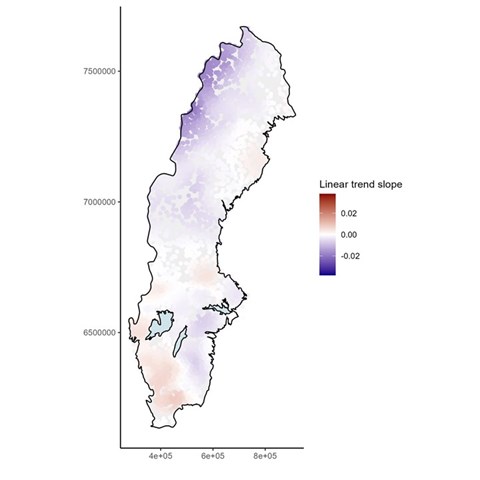Facts:
Participating researchers:
Claudia von Brömssen (project leader, SLU), Karin Eklöf (SLU), Brian Huser (SLU)
Financier:
This study is funded by Formas Grant No. 2022–00942

In this project, we will develop new statistical methodology to analyze trends in data from the Swedish Lake Survey to identify ongoing changes in brownification and oligotrophication and connect them to an extensive list of potential drivers.
Sweden has extensive, long-term and high quality monitoring programs to monitor the state of the environment. These programs have been ongoing for decades and produce large amounts of data that are publicly available in online databases. Unfortunately, the development of appropriate statistical methods has not received the same focus and many of the scientific evaluations of temporal trends in data rely on statistical trend methods that are 40 years old and developed for single sites and short monitoring periods, resulting in a substantial loss of information carried by monitoring.
The main focus of this project is to
von Brömssen et. al., 2023. Temporal trend evaluation in monitoring programs with high spatial resolution and low temporal resolution using geographically weighted regression models https://link.springer.com/article/10.1007/s10661-023-11172-2
Claudia von Brömssen (project leader, SLU), Karin Eklöf (SLU), Brian Huser (SLU)
This study is funded by Formas Grant No. 2022–00942
Claudia von Brömssen Senior Lecturer at the Department of Energy and Technology; Applied statistics and mathematics
Telephone: 018-671720
E-mail: claudia.von.bromssen@slu.se